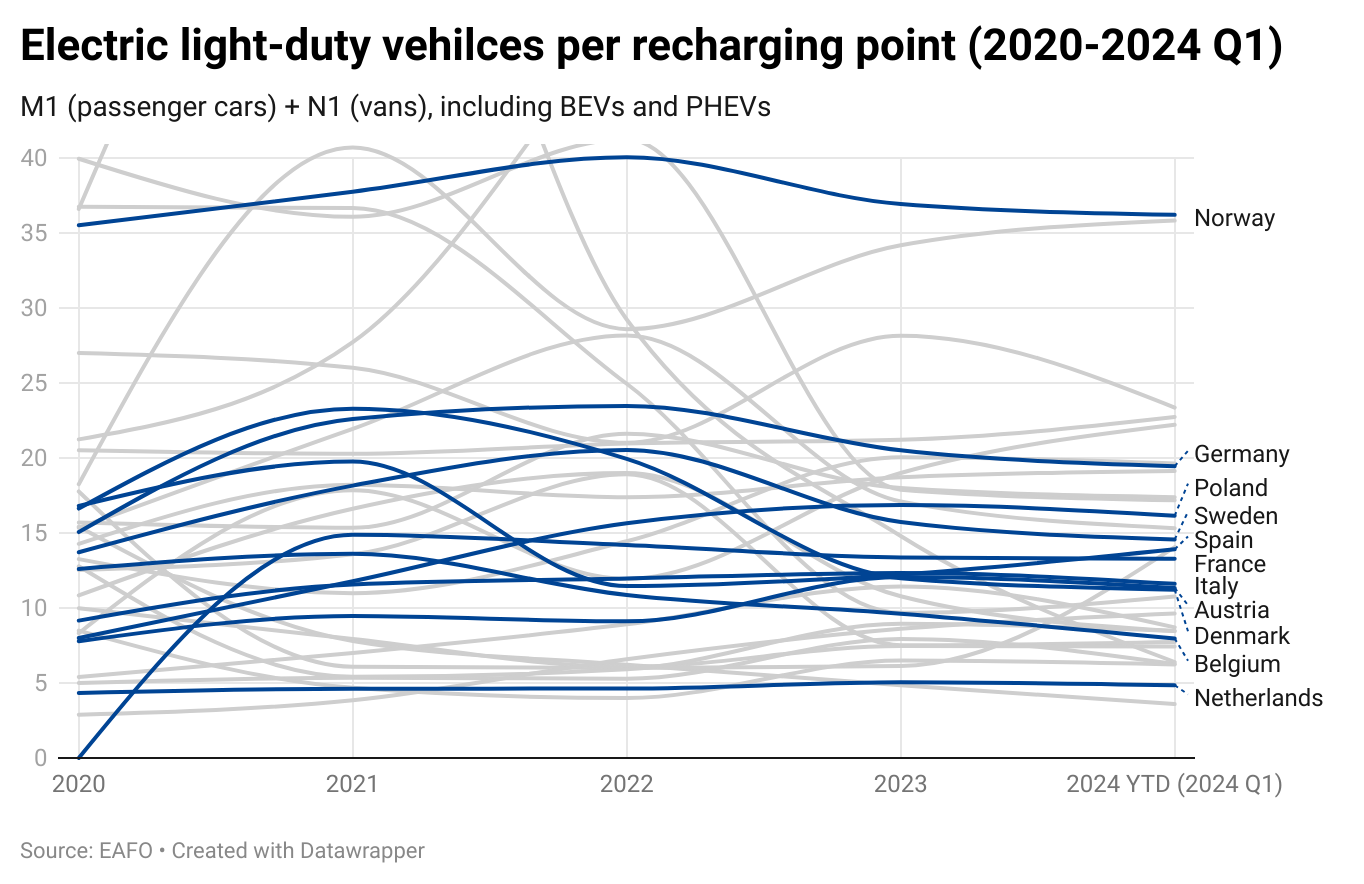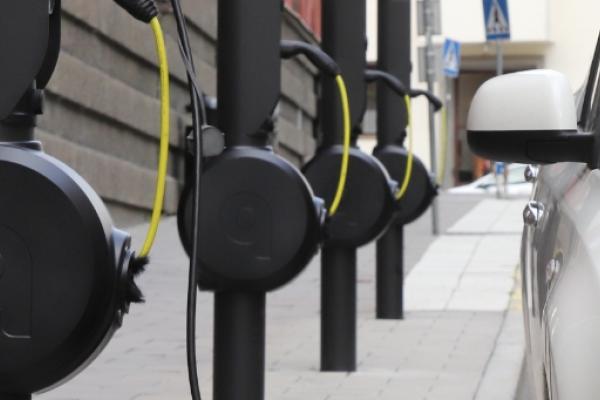
The transition to electric vehicles (EVs) is essential for Europe’s goal to reduce greenhouse gas emissions and achieve sustainable transportation. A key component of this transition is the availability of recharging infrastructure, especially public recharging points. This analysis focuses on the ratio of the light duty (passenger car + van) electric vehicle fleet to the number of public recharging points across various European countries from 2020 to the first quarter of 2024. While private recharging infrastructure also plays a crucial role, this data specifically highlights public recharging points and reflects different national approaches to public vs. private recharging practices.
Key Insights and Trends
- Norway and Iceland: High EV Penetration, Infrastructure Catching Up
- Norway has maintained high ratios, ranging from 35.51 to 36.21, indicating a robust EV fleet but also highlighting the need for further expansion of public recharging infrastructure to match rapid EV adoption.
- Iceland shows high ratios with a significant peak at 41.26 in 2022, before decreasing to 17.18 in 2024. This suggests substantial improvements in public recharging infrastructure, closing the gap between EV adoption and recharging capabilities.
- Western Europe: Diverse Approaches to Public Recharging
- Netherlands consistently demonstrates low ratios, around 4.33 to 5.05 from 2020 to 2024, reflecting a well-developed public recharging network that effectively supports its large EV fleet. The Netherlands has a strong emphasis on public infrastructure to facilitate urban EV use.
- Germany saw an increasing trend up to 2022 (23.47), followed by a slight decrease to 19.45 in 2024. This indicates ongoing efforts to expand public recharging infrastructure in line with growing EV numbers.
- United Kingdom maintains a high ratio, rising from 20.52 in 2020 to 22.74 in 2024, indicating a need for more public recharging points to keep pace with its expanding EV fleet.
- Southern and Eastern Europe: Rapid EV Growth and Emerging Infrastructure
- Portugal displays a fluctuating but generally high ratio, peaking at 28.15 in 2023 and slightly decreasing to 23.36 in 2024, reflecting the need to boost public recharging infrastructure to support its EV growth.
- Poland exhibits steady increase from 8.00 in 2020 to 16.15 in 2024, underscoring the necessity for more public recharging points.
- Romania shows similar trends, peaking at 21.62 in 2022 and stabilizing around 17.39 in 2024, indicating an emerging public recharging network that needs further expansion.
- Emerging Markets: Lagging Public Infrastructure
- Malta shows a significant increase from 21.24 in 2020 to 77.21 in 2024, highlighting a substantial gap between EV adoption and the deployment of public recharging infrastructure.
- Turkey sees a steady rise from 2.89 in 2020 to 9.63 in 2024, reflecting the early stages of public recharging infrastructure development in response to initial EV adoption.
Regional Disparities and Challenges
The data reveals substantial regional disparities in the ratio of EV fleet to public recharging infrastructure. While countries like the Netherlands have balanced growth between EV adoption and public recharging infrastructure, other regions, particularly in Eastern and Southern Europe, struggle to keep up with infrastructure demands. This indicates varying national strategies regarding the reliance on public vs. private recharging solutions.
Conclusion and Recommendations
To ensure a seamless transition to electric mobility, it is crucial for countries to accelerate the deployment of public recharging infrastructure in tandem with EV adoption rates. While private recharging infrastructure also plays a critical role, public recharging points are essential for widespread EV usage, particularly in urban areas and for long-distance travel. Policymakers and industry leaders should prioritize investments in public recharging networks, especially in regions with higher ratios indicating insufficient infrastructure. Collaborative efforts across EU member states can ensure a more uniform and efficient rollout of public recharging infrastructure, supporting the broader goal of sustainable transportation.
By understanding these trends and regional disparities, stakeholders can better strategize and implement effective measures to address the growing needs of EV users, fostering a more robust and reliable public electric vehicle recharging ecosystem across Europe.
Data used in the analysis accessible here.



